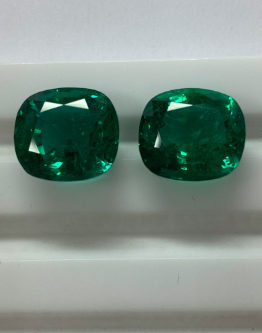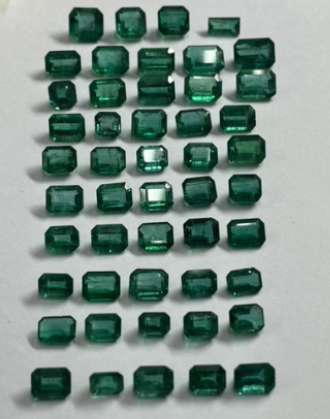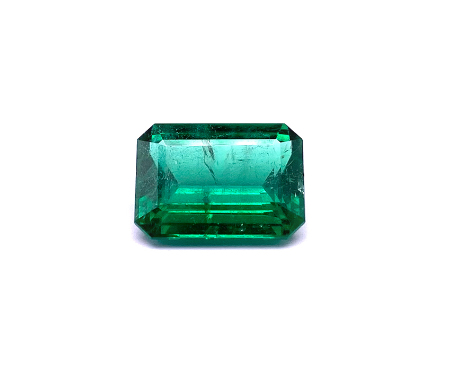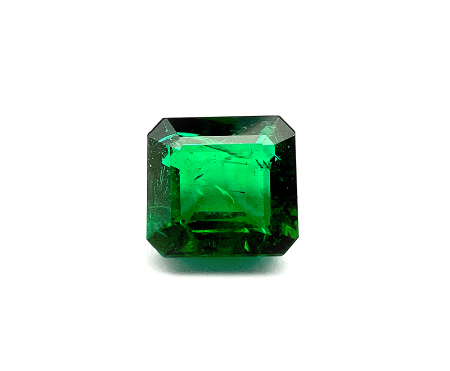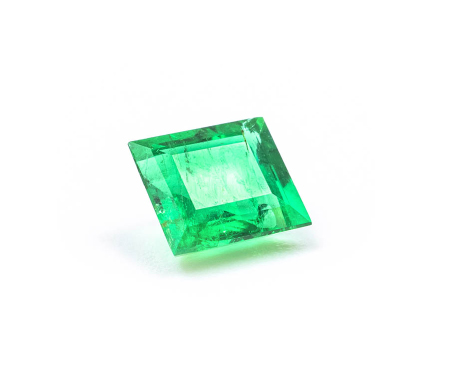Emerald
HomeGemstones
Emerald
This gemstone, with its rich green colour, is one of the long-used precious stones known to man. When talking of emeralds we are referring to only the green variety of the mineral beryl. The oldest known source is in Colombia but finds have also been made in also in Habachtal in Austria. Most of the richly green examples currently come from Zambia in Africa. The most sought-after emeralds are those with a deep, rich green colour and excellent clarity.
Few stones have been desired for a longer period than Emeralds, having been first described as gemstones in the year 1500 BC. Emerald belongs to the mineral group beryl; only the green variety is referred to as emerald, the other colours nearly all have their own names, such as aquamarine for the light blue variety, morganite for orange-brown, goshenite for colourless.The green colour occurs because of the permeation of chromium and/or vanadium. Yes, you have read it correctly! Emeralds are also coloured by chromium, just as with rubies, but in emeralds chromium causes them to appear green, while rubies appear red. The reason is that the stones have different densities, which affects the colours they absorb and thus their appearance.
Few stones have been desired for a longer period than Emeralds, having been first described as gemstones in the year 1500 BC. Emerald belongs to the mineral group beryl; only the green variety is referred to as emerald, the other colours nearly all have their own names, such as aquamarine for the light blue variety, morganite for orange-brown, goshenite for colourless.The green colour occurs because of the permeation of chromium and/or vanadium. Yes, you have read it correctly! Emeralds are also coloured by chromium, just as with rubies, but in emeralds chromium causes them to appear green, while rubies appear red. The reason is that the stones have different densities, which affects the colours they absorb and thus their appearance.
